巻号一覧

50 巻, 12 号
選択された号の論文の7件中1~7を表示しています
- |<
- <
- 1
- >
- >|
第50回日本リハビリテーション医学会学術集会 特別講演
-
村上 陽一郎2013 年 50 巻 12 号 p. 943-946
発行日: 2013年
公開日: 2014/02/04
ジャーナル フリーPDF形式でダウンロード (265K)
第50回日本リハビリテーション医学会学術集会 復興企画講演
-
里宇 明元2013 年 50 巻 12 号 p. 947-950
発行日: 2013年
公開日: 2014/02/04
ジャーナル フリーPDF形式でダウンロード (436K)
第50回日本リハビリテーション医学会学術集会 教育講演
-
岡本 五十雄2013 年 50 巻 12 号 p. 951-956
発行日: 2013年
公開日: 2014/02/04
ジャーナル フリーUntil the time arrives when stroke patients truly recognize themselves as handicapped (living with their disabilities), it is well known that they usually pass through the five stages of grief, namely : denial, anger, bargaining, depression and acceptance. It is difficult to know which stage a patient is at, but we have found that a patient's writing, their letters, the occasional poem, etc are all of great use to identify the stage. Patients who are satisfied with their present lives are more able to accept their situation and therefore have fewer tendencies toward suicidal thoughts. The richness of their lives helps them to overcome their disabilities and enables them to return back to society. We should not force our patients, especially those in the denial or confusion stage, to accept their disabilities and rather must try to listen sincerely about their suffering and their stories. Most patients with brain strokes are encouraged to do their best “ganbare" by medical staff such as nurses, physical therapists, occupational therapists, speech language hearing therapists and doctors, and their family members and their friends. Usually, they are pleased to hear these words. However, some patients may perceive such encouragement as stressful, but if we know how to use these words in a supportive, positive manner, then they can be useful words in the care of stroke patients.抄録全体を表示PDF形式でダウンロード (355K)
第50回日本リハビリテーション医学会学術集会 会長推薦講演
-
栢森 良二2013 年 50 巻 12 号 p. 957-961
発行日: 2013年
公開日: 2014/02/04
ジャーナル フリーThalidomide embryopathy resulted in babies born with deformities such as phocomelia after their mothers took only a few tablets of thalidomide drug during 36 to 56 days after their last menstrual periods. There are two thalidomide embryopathy groups depending upon whether their hypoplasia is in the limbs or the auditory organs. In the limb group, deformities range from amelia to hypoplasia of the thumb. In the auditory group, the severity can be determined by the degree of deafness. This group is often associated with aplasia of the abducens and facial nucleus. Fifty years after the thalidomide scandal, the drug is still in use. It helps treat leprosy, multiple myeloma, AIDS and cachexia. As of June 2012, there are two hundred and ninetyfive victims still living in Japan. Disabilities include inadequate pinch and grasp, besides short reach. In the last two decades, the condition of these patients has worsened with chronic intractable pain due to overuse of hypoplastic skeletal muscles. They are now suffering from snapping fingers, stenosing tenosynovitis (trigger finger) and carpal tunnel syndrome. As their concomitant deformities or impairments include dislocation of the shoulder, droopy shoulders, hip dislocation, cervical block vertebrae, thoracic kyphosis, scoliosis, occult spina bifida, and L 6 lumbarization, these have become secondary etiologies for chronic pain, resulting in a dependent ADL condition. For these patients, physical exercise or recreation activities have become a viscous circle of ever increasing pain, weakness and fatigue. Furthermore, the resulting inactivity and weight gain has made ADL even more problematic. They also suffer from internal organ anomalies. Thus, a variety of problems including weakness and chronic intractable pain, which may be called post-thalidomide syndrome, has created an additional barrier for the surviving thalidomide embryopathy patients in social participation, as their aging is progressing.抄録全体を表示PDF形式でダウンロード (1044K)
原著
-
-Mini-Mental State Examination,Trail Making Test,Wisconsin Card Sorting Testパソコン版,三宅式記銘力検査-岡﨑 哲也, 佐伯 覚, 蜂須賀 研二2013 年 50 巻 12 号 p. 962-970
発行日: 2013年
公開日: 2014/02/04
ジャーナル フリー簡易な神経心理学的検査は外傷性脳損傷者の評価に頻用されるが,青年期基準値が設定されていない.そこで我々は15~30歳の健常青年124名を対象にTrail Making Test(TMT)Part AとB,Wisconsin Card Sorting Testパソコン版(WCST-KFS),三宅式記銘力検査(MVPLT)の標準値を求めた.全対象での中央値はTMT Part Aが23.8秒,Part Bは49.0 秒であった.WCST-KFSの達成カテゴリー数は5,ネルソン型保続数は2,セット維持困難数は0であった.MVPLTの有関係対語3回目は10,無関係対語3回目は9であった.また,年齢とTMT Part B,WCST-KFSのネルソン型保続数に弱い負の相関,MVPLT有関係対語1回目とは弱い正の相関を認め,15~30歳において年齢の影響が示唆された.今回示した標準値は青年期高次脳機能障害者の臨床評価や障害認定の基準となる.抄録全体を表示PDF形式でダウンロード (842K)
地方会
-
2013 年 50 巻 12 号 p. 971-980
発行日: 2013年
公開日: 2014/02/04
ジャーナル フリーPDF形式でダウンロード (567K)
第10回専門医・第21回認定臨床医試験問題
-
2013 年 50 巻 12 号 p. 981-999
発行日: 2013年
公開日: 2014/02/04
ジャーナル フリーPDF形式でダウンロード (2254K)
- |<
- <
- 1
- >
- >|